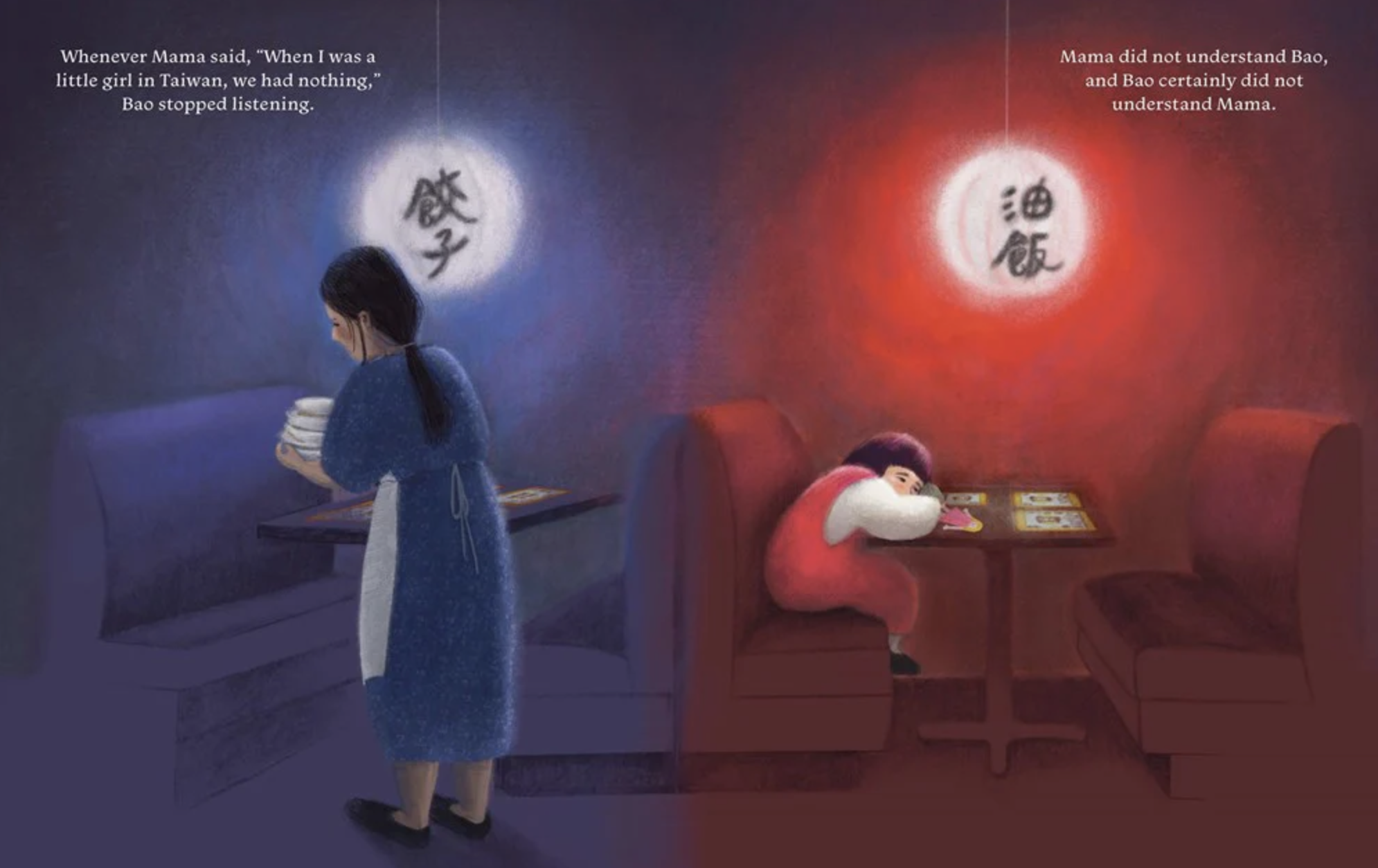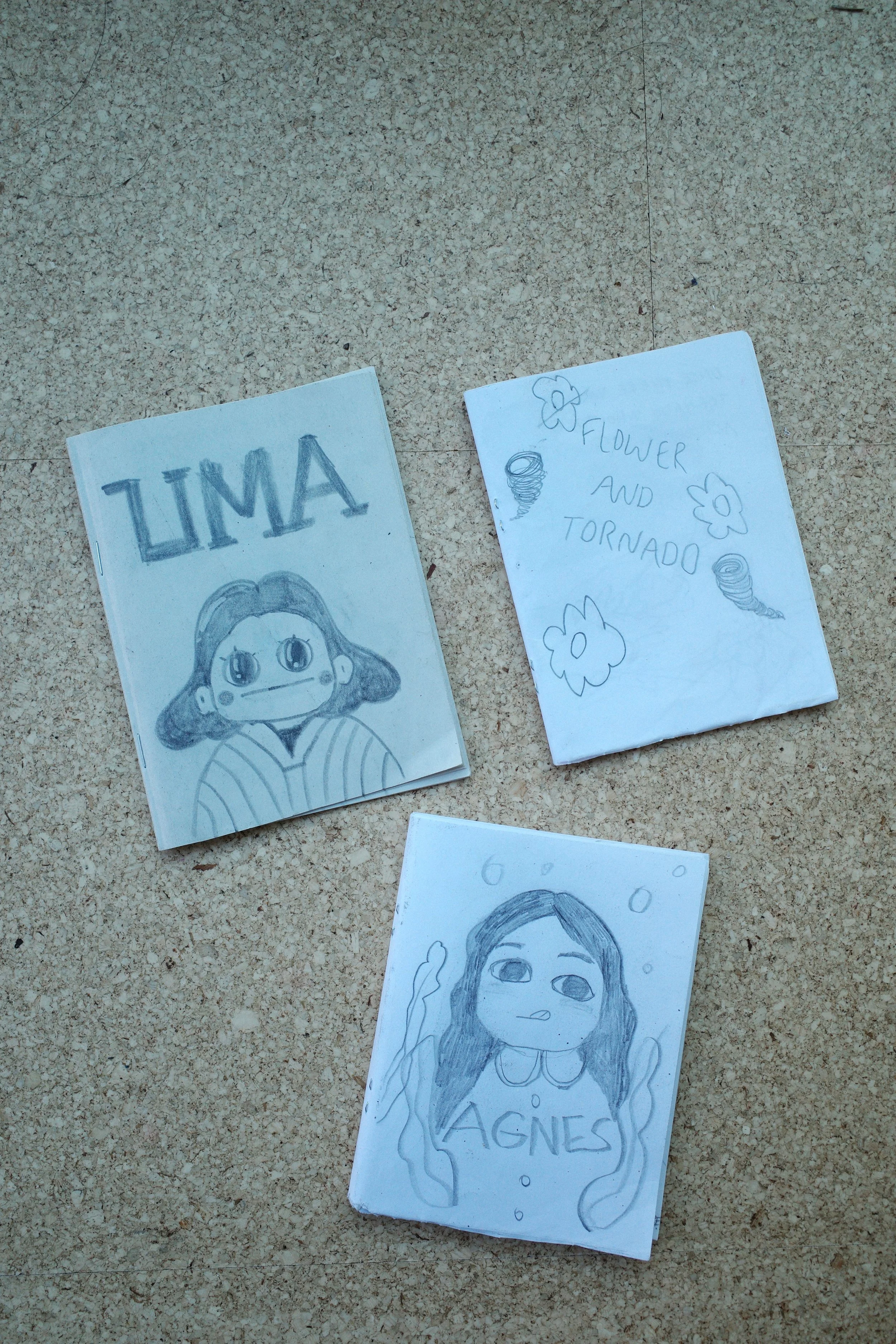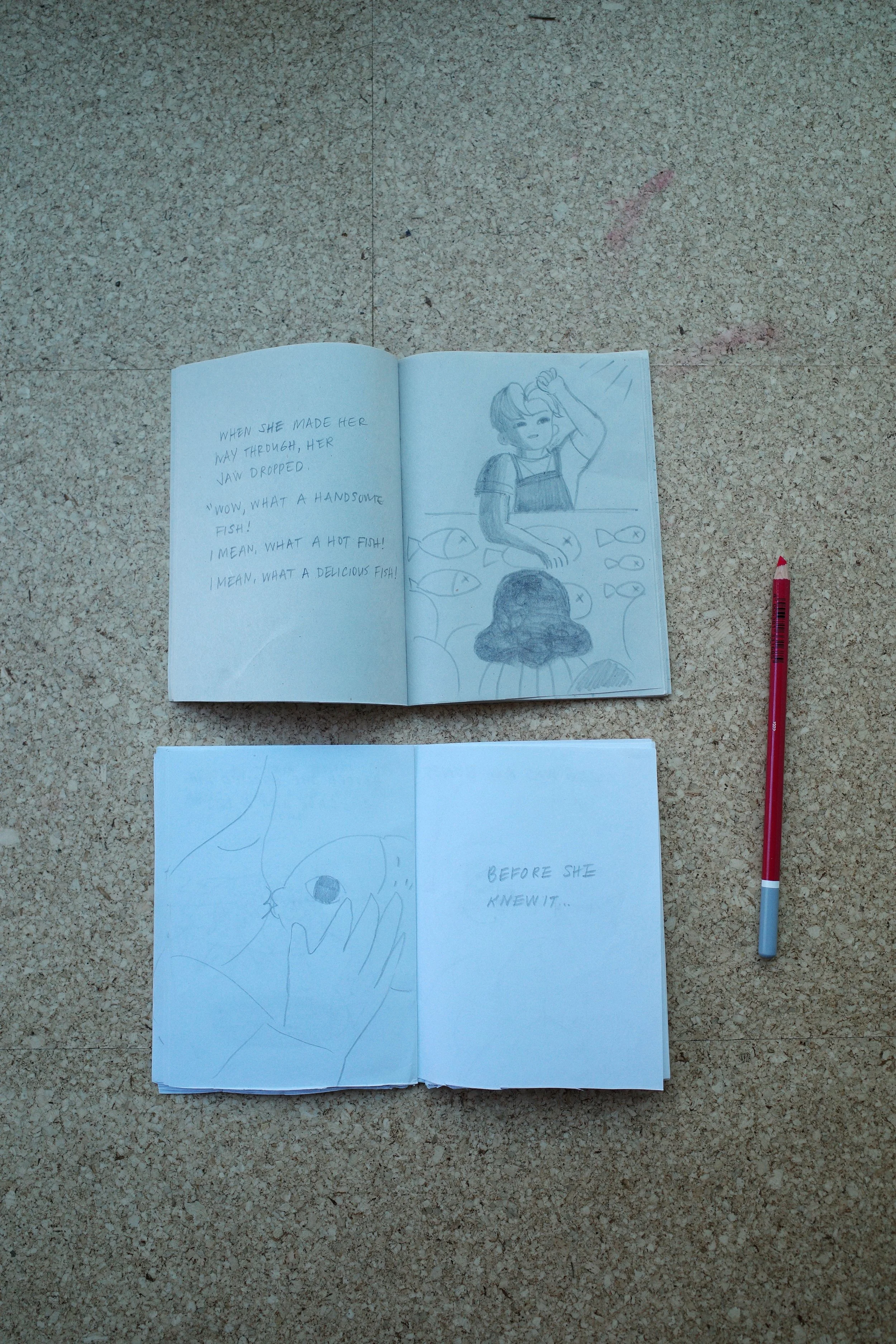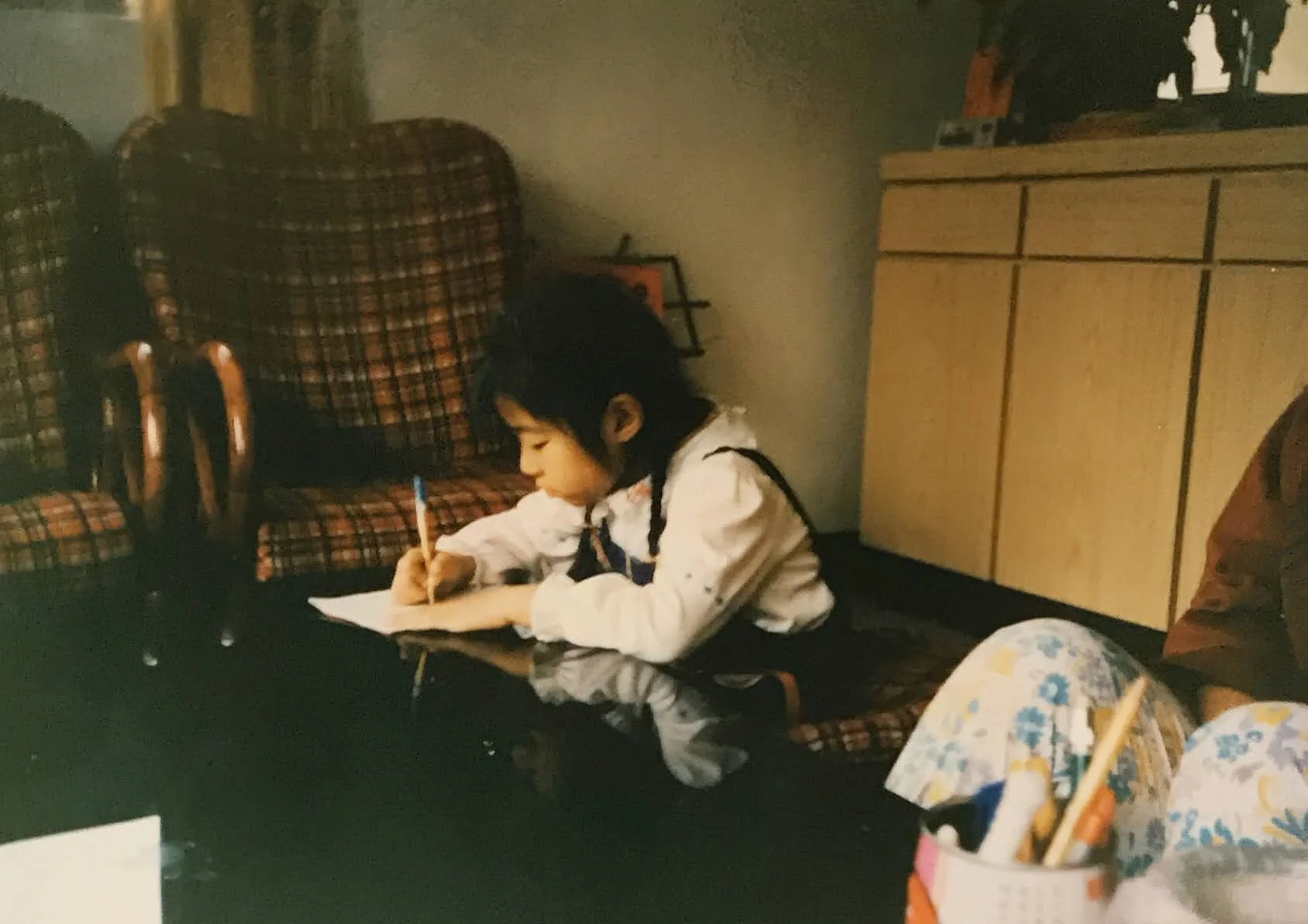Bo Lu – Picture Book Author & Illustrator
Thanks for joining us!
The interview with Bo and Nora was conducted in September 2025.
Episode art was drawn by Jean. The episode was edited by Kara.
It was originally released in October 2025.
— Check out Bo’s debut picture book BAO’S DOLL —
Click on the cover photo for a link to the book on our Bookshop.org account
Find Bao’s Doll here!
— Bo’s dummies! —
— Bo drawing as a young girl —
— Bo Lu Episode Summary —
Meeting Bo and her daughter Nora —
Nora makes books as well as her mom! She doesn’t like coloring her drawings much. She says: “It's like I feel special when I make books because like, I don't even plan the story first. I draw a picture and then I draw more pictures, then I turn it into a story.” It’s her own creative process.
Bo feels inspired by Nora’s creativity, freedom, and concentration with her drawing.
It can take years from when a book contract is signed to when it comes out. It has taken Bo two years between book creation and it being published, though they all have their own timeline.
Ren’s Pencil and drawing as survival —
Ren's Pencil is based on her experience moving from Taiwan to Kansas. So it's about a little girl who moves from the east to the west and away from her favorite person, her grandmother. And she feels a little bit lost without knowing the language and without knowing the environment.
Without knowing the language, she gets really confused one day. She's at the hair salon where they ask if she wants her hair short and they cut it all off. So her long locks fall away and she feels really sad and lost.
And then sort of enters this magical place with a large yellow cat, kind of like the one in Totoro, but also kind of like the one in Alice in Wonderland. So this cat takes her all over and they run into a princess in a tower and the princess is stuck and needs help. And then Rin discovers that the pencil that Puo Puo (her grandmother) gave her is magical. And she starts to draw a bridge for the princess to come down.
And she realizes that through her pencil, she's able to express herself. “And so like Ren, I also felt like without knowing English, drawing was my way to really express my emotions and eventually, yeah, feel more at home.”
Bo drew throughout her life. After coming to the United States, it was a survival mechanism. Drawing became a way of feeling special.
Bo grew up with her aunt and uncle and two cousins in Taiwan. She didn’t meet her parents until she moved to the United States when she was seven. That was challenging and scary.
When she got to Kansas, her parents were working a lot at the Chinese restaurant. And Bo remembers drawing on the placemats at the restaurant. She would always turn it over and draw on it, usually of dolls and girls, and make paper dolls.
Bao’s Doll and expressing how things feel —
Bo says that making picture books has been a way for her to understand her emotions and diving back into experiences as a child. In making the books, she’s understanding my younger self, her inner child more.
Bao’s Doll even helped her to understand her mother more and build empathy towards her.
T wondered why Bao’s Doll has different colors for Bao and Mama?
Bao says that she wanted to have the colors represent the characters and how separate they might feel. So the blue and the yellow were very distinct in the beginning. And as the story goes on and they start to understand each other more, they are more blended and turn into purple.
The colors weren’t always this way. Bao was yellow before she was orange and then orange before she was red.
Bo eventually landed on red because she looked at photos of herself as a kid and she was always wearing red. Because her aunties believed that red was a lucky color. In Chinese culture, it's very lucky color.
So she decided that Bao was going to be red and a very contrasting color was blue and blue happens to be colder too. Which makes sense because the mother, mama seems like she feels distant to bow or a little bit less warm and loving.
Part of what is important for Bo in making children's books is the opportunity to tell her own story. So from that perspective, she felt it was important to write her stories, but she doesn't always trust her ability to express herself through words. So she loves to also draw, which adds to the story.
“The words usually expresses what is happening, and the pictures usually express how it feels.”
That sentiment shines through in Bao’s Doll, like on the page when there’s a big boulder between Bao and Mama – this big, insurmountable thing separating them.
Originally there was no boulder between them, but Bo’s editor suggested they not just be floating on the page.
Bo was nervous to show her mom the book – she didn’t even tell her about it when she was working on it. When she finally showed it to her mom, she didn’t say anything, but a few days later she texted and said “this is simple but it says it all.”
Bo hopes that her mom sees some of her experience in the book, and that it provides a small window for them to see each other.
Dummies, drafts, and having faith in yourself —
Bo and Nora tell us about picture book dummies, which Bo makes at the beginning stages of making a book. It’s a fast and easy way to see what a book could look like. So she’ll draw and write in a tiny book that she’s folded and cut and stapled.
There were 29 or 30 versions of Bao’s Doll before the final one that was published.
There were also about 20 rounds before settling on the final book cover.
Bo was 41 or 42 when her first book came out. She had always had a fantasy of making children’s books, and when she had Nora, it reignited her love for children’s books. She was surprised by the capacity picture books had for big emotions and the beauty of it.
She felt very drawn to making them. And she heard someone say it takes a lot of patience, it takes a lot of time, but also it takes a lot of faith. Faith in just knowing that the story will come out how it's meant to be. And a lot of time, it's her letting go of control and let it become what it's meant to be.
“I don't think I've been really religious in my life, but this feels like my practice of faith is learning to trust the process and learning to trust myself. I feel like I've grown from every book, you know, and I feel like every book has taught me something that I am applying to the next one. And it's also nice to see my own growth throughout all these projects and all these books.”





